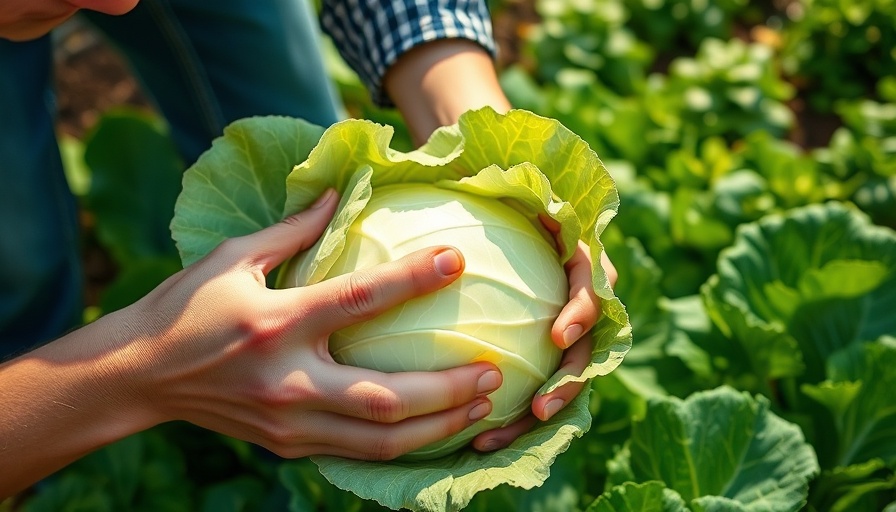
Why August is the Perfect Time to Start Your Fall Garden
As summer fades and cooler temperatures start to settle in, August emerges as an opportune time for gardening enthusiasts and seasonal planters. This month marks a transition that invites avid gardeners to rethink their planting strategies, focusing on cool-weather crops that flourish as the days grow shorter. So, whether you are a seasoned gardener or embarking on your first backyard project, now is the moment to turn your land into a cornucopia of fall vegetables!
The Benefits of Direct Sowing Vegetables
One of the greatest joys of gardening in August is the simplicity of direct sowing. Unlike starting seeds indoors, which can be time-consuming and require specific conditions, direct sowing involves planting seeds right where you want them to grow. You can quickly fill empty spots in your garden, making it an ideal strategy for gardeners who've just cleared out summer crops.
Moreover, many cool-weather crops thrive in the end-of-summer soil. Varieties such as kale, cabbage, and spinach not only endure cooler climates but often taste better after a touch of frost. This season also supports quick-growing crops like radishes and lettuce, perfect for those eager to enjoy fresh produce without a lengthy wait. All it takes is a little planning, and you'll be harvesting fresh veggies right as the leaves start turning.
13 Vegetables to Consider Sowing in August
For those looking to fill their gardens with vibrant greens this August, here's a lineup of 13 vegetables perfect for your fall harvest:
- **Arugula/Wild Rocket**: Known for its spicy flavor, arugula thrives in cooler temperatures, making it a wonderful choice for late summer planting.
- **Round Black Spanish Radish**: These fast-growing radishes can be harvested in just 30-40 days, adding crunch to your salads.
- **America Spinach**: Spinach is another green powerhouse that grows well in the cooler months and can be enjoyed fresh or cooked.
- **Bok Choy**: A staple in Asian cuisine, this tender green matures quickly and is a perfect fit for your fall garden.
- **Kale**: Nutrient-rich kale is a fantastic option that can withstand mild frosts.
- **Cauliflower**: This versatile vegetable is not only nutritious but also adds elegance to your fall meals.
- **Collard Greens**: Robust against cold, collards only get sweeter as temperatures drop.
- **Lettuce**: Varieties like butterhead and romaine grow rapidly, ensuring a fresh salad in no time.
- **Snap Peas**: These can be sown in August and harvested well into the fall.
- **Turnips**: Both the roots and greens are edible and beneficial for your garden.
- **Radicchio**: With its striking color and slightly bitter flavor, this chicory family member is a unique addition.
- **Cilantro**: Ideal for culinary use, cilantro can be sown in your garden and enjoyed in diverse dishes.
- **Beets**: Sweet and nutritious, beets are excellent for both their roots and greens.
Tips for Successful Sowing This August
If you’re in Muskegon or nearby, make use of local resources to boost your gardening success. Consider options like creating a backyard planting box or constructing outdoor soil beds to truly optimize your space. Getting the right materials is crucial, so check for resources like elevated planter boxes or raised beds that make gardening easier.
Once you've chosen your vegetables, the following tips can help ensure a fruitful planting experience:
- Soil Quality: Invest in soil amendments to provide your vegetables with the nutrients they need.
- Sunlight: Most fall vegetables enjoy plenty of sun, so make sure they’re planted in a location that gets at least six hours of sunlight per day.
- Watering: New seedlings require consistent moisture; consider automated watering hacks to reduce effort while keeping plants hydrated.
- Spacing: Ensure you provide enough space between your plants to allow for growth and airflow.
Conclusion: Dive Into Gardening This August!
As you consider filling your garden with these 13 vegetables this August, remember that now is not the time to delay your planting endeavors. Instead, embrace the opportunity to sow seeds directly in your yard for an abundant fall harvest. Whether you're constructing outdoor soil beds, building elevated planter boxes or simply making a plan for your garden layout, using these tips ensures you engage in sustainable gardening practices that bear fruit.
If you’re ready to keep your garden flourishing not just in August but throughout the year, connect with Norther-LawnCare.com for expert lawn care and property management in Muskegon and surrounding areas. Call Everett Lucas at 231-450-3414, and let’s make your yard a space to be proud of!
 Add Row
Add Row 
 Add
Add 


Write A Comment